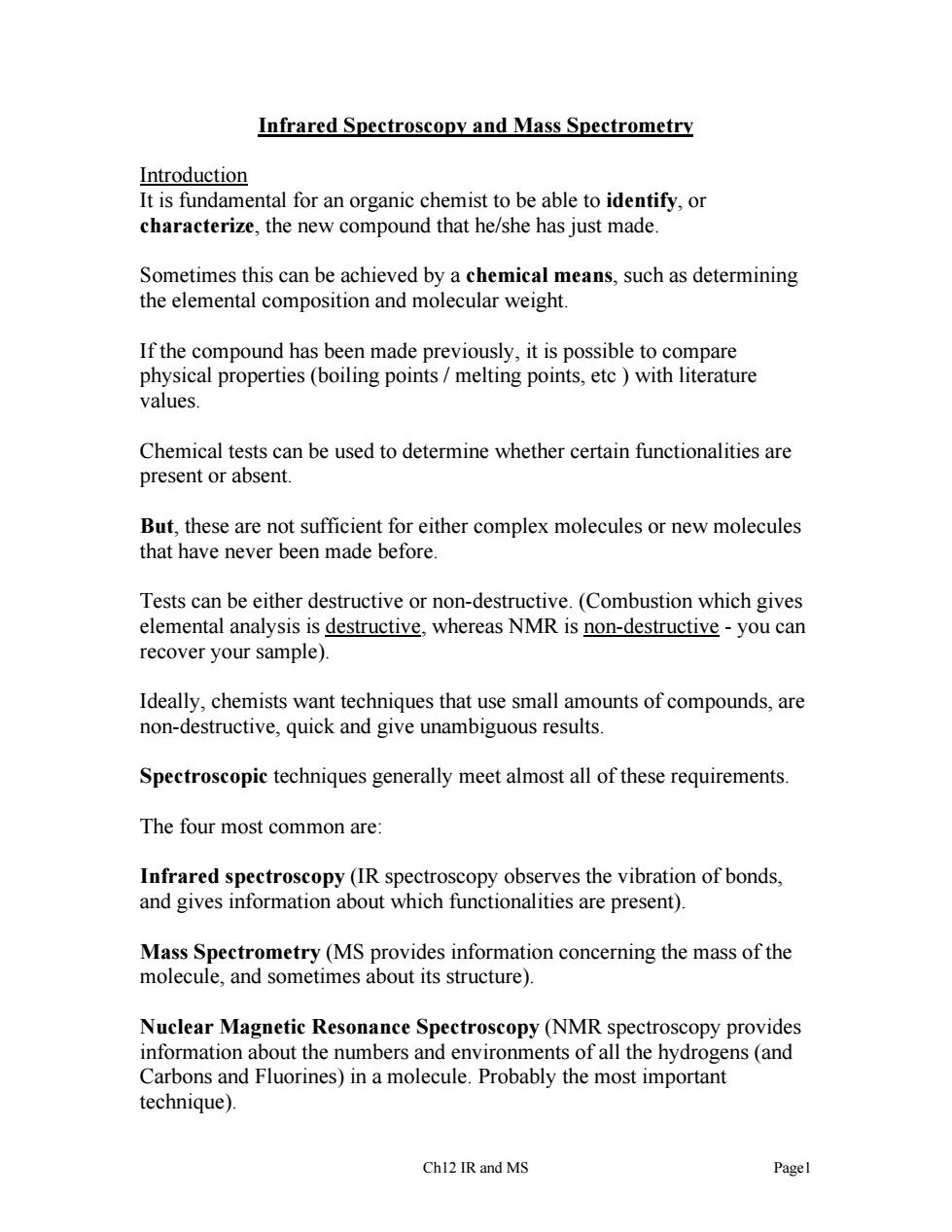正在加载图片...

Infrared Spectroscopv and Mass Spectrometrv Introduction It is fundamental for an organic chemist to be able to identify,or characterize,the new compound that he/she has just made. Sometimes this can be achieved by a chemical means,such as determining the elemental composition and molecular weight. If the compound has been made previously,it is possible to compare physical properties (boiling points/melting points,etc with literature values Chemical tests can be used to determine whether certain functionalities are present or absent. But,these are not sufficient for either complex molecules or new molecules that have never been made before. Tests can be either destructive or non-destructive.(Combustion which gives elemental analysis is destructive,whereas NMR is non-destructive-you can recover your sample). Ideally,chemists want techniques that use small amounts of compounds,are non-destructive,quick and give unambiguous results Spectroscopic techniques generally meet almost all of these requirements. The four most common are: Infrared spectroscopy (IR spectroscopy observes the vibration of bonds, and gives information about which functionalities are present). Mass Spectrometry(MS provides information concerning the mass of the molecule,and sometimes about its structure). Nuclear Magnetic Resonance Spectroscopy(NMR spectroscopy provides information about the numbers and environments of all the hydrogens(and Carbons and Fluorines)in a molecule.Probably the most important technique). Ch12 IR and MS PagelInfrared Spectroscopy and Mass Spectrometry Introduction It is fundamental for an organic chemist to be able to identify, or characterize, the new compound that he/she has just made. Sometimes this can be achieved by a chemical means, such as determining the elemental composition and molecular weight. If the compound has been made previously, it is possible to compare physical properties (boiling points / melting points, etc ) with literature values. Chemical tests can be used to determine whether certain functionalities are present or absent. But, these are not sufficient for either complex molecules or new molecules that have never been made before. Tests can be either destructive or non-destructive. (Combustion which gives elemental analysis is destructive, whereas NMR is non-destructive - you can recover your sample). Ideally, chemists want techniques that use small amounts of compounds, are non-destructive, quick and give unambiguous results. Spectroscopic techniques generally meet almost all of these requirements. The four most common are: Infrared spectroscopy (IR spectroscopy observes the vibration of bonds, and gives information about which functionalities are present). Mass Spectrometry (MS provides information concerning the mass of the molecule, and sometimes about its structure). Nuclear Magnetic Resonance Spectroscopy (NMR spectroscopy provides information about the numbers and environments of all the hydrogens (and Carbons and Fluorines) in a molecule. Probably the most important technique). Ch12 IR and MS Page1